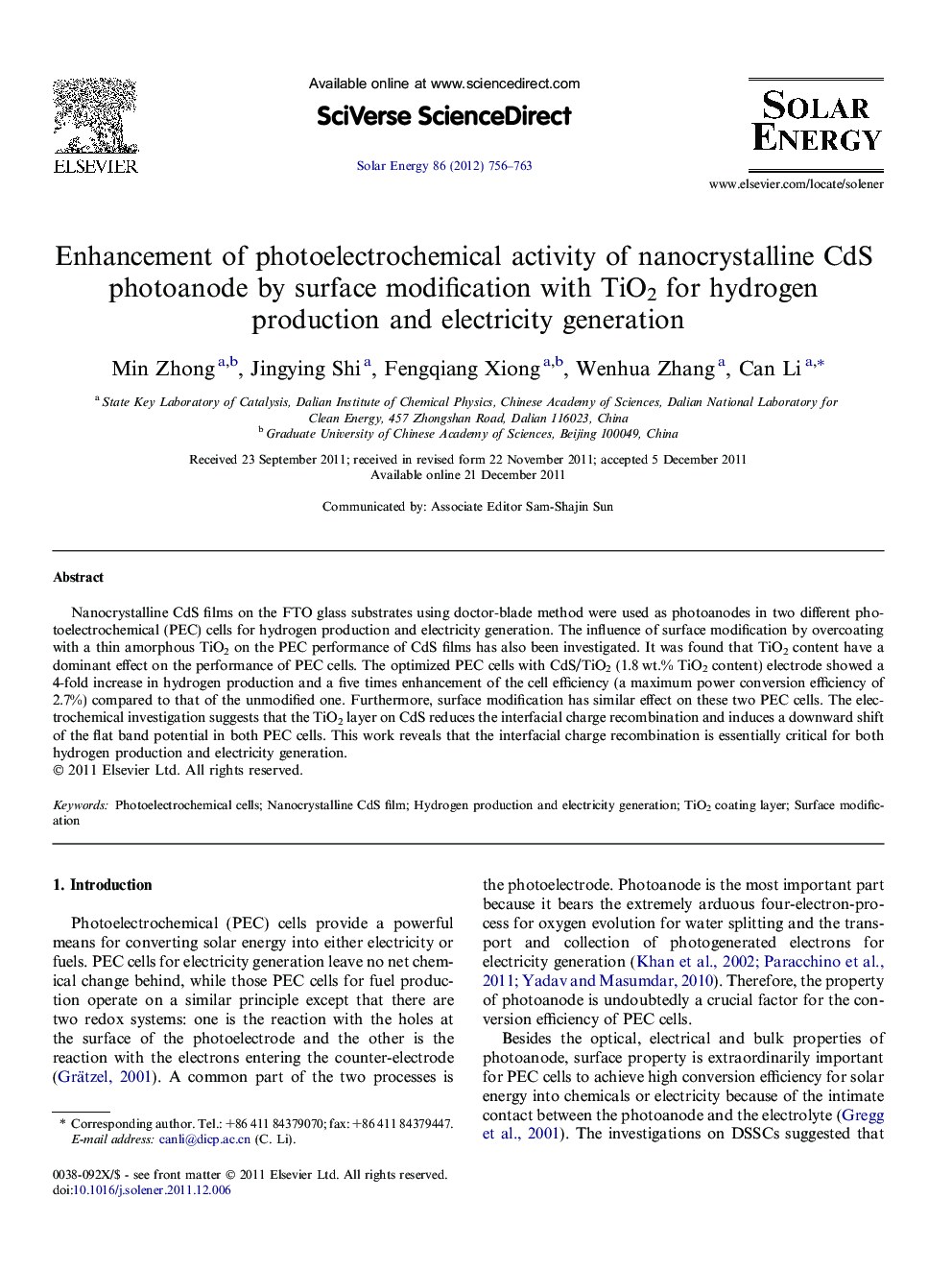| Article ID | Journal | Published Year | Pages | File Type |
|---|---|---|---|---|
| 1550948 | Solar Energy | 2012 | 8 Pages |
Nanocrystalline CdS films on the FTO glass substrates using doctor-blade method were used as photoanodes in two different photoelectrochemical (PEC) cells for hydrogen production and electricity generation. The influence of surface modification by overcoating with a thin amorphous TiO2 on the PEC performance of CdS films has also been investigated. It was found that TiO2 content have a dominant effect on the performance of PEC cells. The optimized PEC cells with CdS/TiO2 (1.8 wt.% TiO2 content) electrode showed a 4-fold increase in hydrogen production and a five times enhancement of the cell efficiency (a maximum power conversion efficiency of 2.7%) compared to that of the unmodified one. Furthermore, surface modification has similar effect on these two PEC cells. The electrochemical investigation suggests that the TiO2 layer on CdS reduces the interfacial charge recombination and induces a downward shift of the flat band potential in both PEC cells. This work reveals that the interfacial charge recombination is essentially critical for both hydrogen production and electricity generation.
Graphical abstractThe performance of the PEC cells with nanocrystalline CdS films for hydrogen production and electricity generation can be significantly improved with thin TiO2 overcoating.Figure optionsDownload full-size imageDownload as PowerPoint slideHighlights► CdS PEC cells for hydrogen production in comparison with electricity generation. ► The performance of the PEC cells can be significantly improved with TiO2 coating. ► Surface modification has similar influence on PEC cells for hydrogen production and electricity generation.
